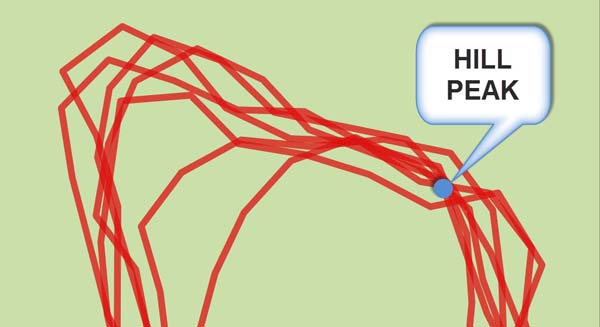This morning I feel battered. I have been pushing myself on the walks. Walk therapy appears to be the one action that I can take that delivers clear, positive result. Walking appears to smooth out potential upheavals, leaves me better prepared to cope, drives awareness and insight. I believe walking generates a Flow state. And there exists published evidence that a walk in the woods results in physical changes to the brain and an increase in positive neurotransmitters.
Walking is good.
Walking is tiring.
I can feel the burn in my upper thigh muscles. These appear to be responding to an increase in hill climb activity. I appear to go up the hill faster, my recovery period at the top is much reduced, I feel stronger. I also experience a desire to nap on return home.
Yesterday, as an experiment, I denied myself the nap. I wanted to push through to the evening, get to sleep early, and see if I might sleep through the night. The experiment failed. I went to bed early but then automatically awoke two hours later feeling totally refreshed. I tried returning to sleep but this did not work. I have no record of when I actually did achieve sleep.
This morning I woke late, have had trouble getting into gear and feel fatigued. I am also sneezing and I may be confusing the onset of a cold with sleep problems. But I am aware that since the injury I have experienced a completely disrupted sleep pattern. My understanding of my injury is that it resulted in a hydrostatic pressure wave in the rear of the skull case and this likely caused injury to that portion of the brain that controls circadian rhythms. Before the injury I had excellent sleep hygiene. If I did not get to sleep within a half hour of returning home in the morning, I would be awake for most of the day and then be forced to struggle through the next night of work. I trained myself to maintain a properly regulated sleep schedule that matched my work demands. Despite making multiple attempts at similar regulation post-injury, I have not achieved the same success.
—————————————
Walk Data
During the last two hill walks I have been collecting data. The data indicates that a consumer grade cell phone GPS operated in a forest environment demonstrates considerable track variance:

The following data is averaged from 12 runs:
The distance from my front door to the base of the hill is 1.1 miles.
The hill loop (one repetition) is .64 of a mile long.
Maximum recorded track variance is .17 of a mile.
The average time to complete one repetition is 12.07 minutes.
The average speed of travel on one repetition is 3.2 mph.
If you incorrectly enter 12.07 minutes as 12.07 seconds in the speed calculator the resulting speed value is 192 mph. No wonder I feel muscle burn.
—————————————
The actual publication providing details of the benefits of walking in nature may be found here. The following is the abstract:
Nature Walks Benefit – Abstract
This study investigated the impact of nature experience on affect and cognition. We randomly assigned sixty participants to a 50-min walk in either a natural or an urban environment in and around Stanford, California. Before and after their walk, participants completed a series of psychological assessments of affective and cognitive functioning. Compared to the urban walk, the nature walk resulted in affective benefits (decreased anxiety, rumination, and negative affect, and preservation of positive affect) as well as cognitive benefits (increased working memory performance). This study extends previous research by demonstrating additional benefits of nature experience on affect and cognition through assessments of anxiety, rumination, and a complex measure of working memory (operation span task). These findings further our understanding of the influence of relatively brief nature experiences on affect and cognition, and help to lay the foundation for future research on the mechanisms underlying these effects.
